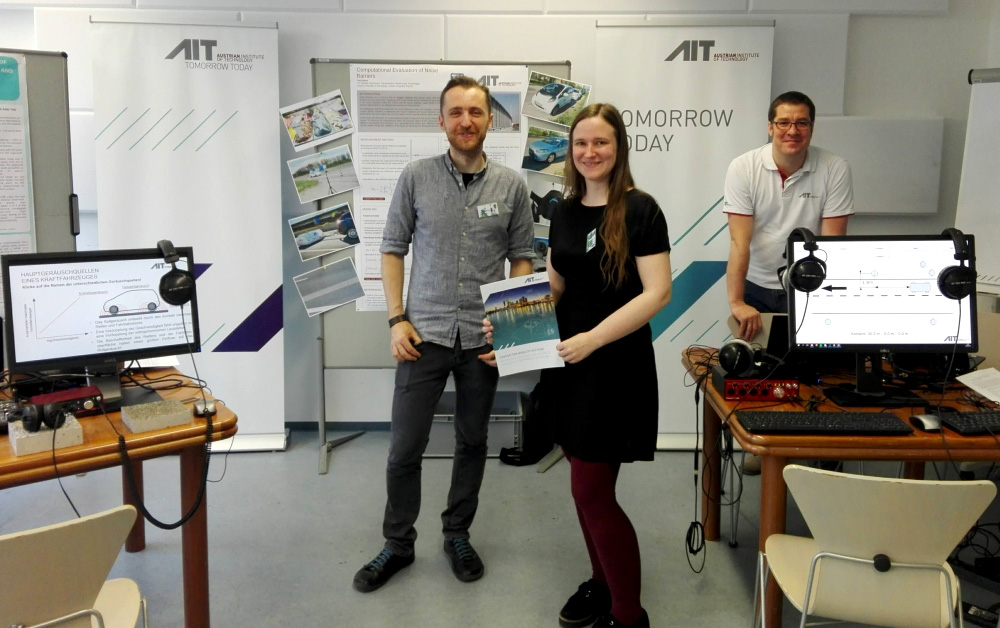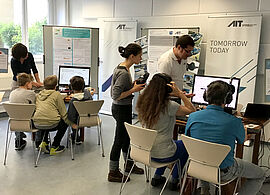On 24 April 2019, the international day against noise, the Institute for Sound Research of the Austrian Academy of Sciences hosted a day of action. Under this year's motto ‘Sound arm sharpens hearing’, research projects on the subject of noise and sound were presented with free admission. The AIT Center for Mobility Systems was represented by a team led by acoustics expert Martin Czuka, and presented current research projects and solutions for noise reduction and acoustics in the transport sector at three stations.
How do low-noise road surfaces work?
Tyre noise is the dominant source of noise from road traffic, even at moderate speeds. Low-noise road surfaces are therefore an important measure for noise reduction.
At this station, interested visitors were able to compare different road surfaces acoustically and explore the effect of innovative road surfaces as a noise protection measure interactively.
How do noise barriers work?
Noise barriers have a noise-shielding effect; they partially prevent the propagation of sound. The effectiveness of a noise barrier depends on various factors.
Interested parties were able to interactively select the source and receiver position as well as the desired noise barrier. The signal behind the wall was then acoustically synthesised.
Traffic noise 2.0: What does an electric vehicle sound like?
Thanks to the elimination of the combustion engine, electric vehicles generate significantly less noise at low speeds than conventional vehicles with combustion engines. For this reason, an EU regulation will come into force on 1 July 2019 that will require an artificially generated audible warning signal for new electric vehicles. But how well can an electric vehicle be heard in daily traffic with or without a warning signal?
Using interactive audio samples, interested parties were able to test when they can acoustically perceive an approaching electric vehicle in various traffic situations.




